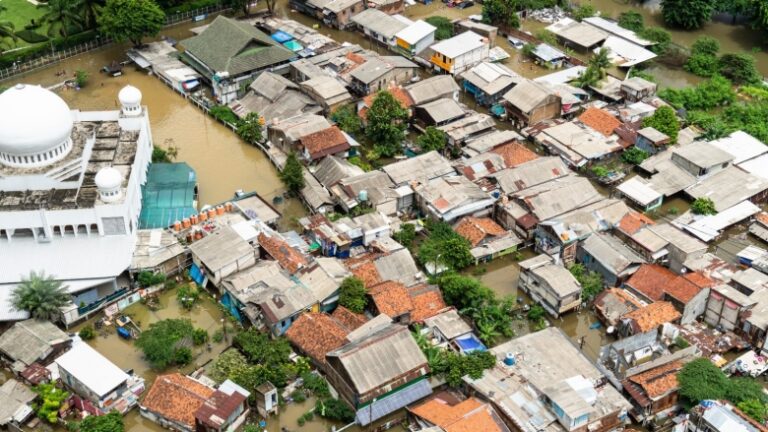The World Bank, with support from the Swiss State Secretariat for Economic Affairs (SECO), has closely partnered with the Indonesian government to develop the DRFI strategy and continues to work with the government on its implementation. In January 2021, the World Bank approved a US$500 million lending operation to support Indonesia’s efforts to build and strengthen its financial response to natural disasters, climate risks, and health-related shocks such as the COVID-19 pandemic. The loan supports the establishment of a Pooling Fund for Disasters, that was legally created in August 2021 through a Presidential Regulation. It will serve as a central mechanism that will help ensure effective and transparent flow of money to relevant government agencies, including faster social assistance payments for victims of disasters, and improve preparedness planning.
Over time, the Pooling Fund will leverage domestic and international insurance and capital markets to increase its financial capacity. The lending operation will also invest in activities to improve planning, such as introducing budget tracking for disaster-related expenditures.
In addition, a U.S. $14 million grant from the Global Risk Financing Facility (GRiF), a multi-donor trust fund managed by the World Bank that helps countries design and implement financial solutions to manage disasters and climate shocks, is co-financing efforts to help build the government’s technical capacity in managing funds to protect the most vulnerable groups.
Another key component of the World Bank’s ongoing collaboration with the Ministry of Finance on DRFI is implementing and scaling up the government’s State Asset Insurance Program. Since its launch in 2019, the insurance program has covered more than 4,300 buildings of 51 ministries as of September 2021.
Work is also underway toward integrating Indonesia’s efforts with the Southeast Asia Disaster Risk Insurance Facility (www.seadrif.org), an initiative of the members of the Association of Southeast Asian Nations (ASEAN) Plus Three (Japan, China, and South Korea), which is supported by the World Bank, and which has identified financial protection of public assets as a priority product. Indonesia is a member of the facility, and similar work is ongoing among neighbors across ASEAN, including the Philippines and Vietnam.
These initiatives are integral to efforts to achieve the key goals Indonesia identified for the DRFI strategy: to shield the state budget from unexpected expenses through a dedicated mechanism to efficiently manage central government disaster expenditures and to strengthen central government and regional fiscal coordination by establishing clear roles and responsibilities for financing disaster response. The DRFI Strategy also aims to protect state assets from destruction as a result of disasters through an indemnity insurance program covering all agencies and ministries, and to protect people, particularly through the poor, with social safety net programs when disaster struck.
Natural disasters have become a fact of life for Indone

